The Triennale Milano’s current exhibition Broken Nature: Design Takes On Human Survival explores the concept of restorative design in the face of humanity’s severely compromised relationship with the natural environment.

Installation view. Image copyright La Triennale di Milano, photo by Gianluca Di Ioia
April 9th, 2019
If the headiness of Milan Design Week begins to overwhelm you this week, head over to the Triennale Milano (or brokennature.org if you didn’t make the trip) and take some time to contemplate design’s role in the big picture of humanity’s place on the planet.
Curator Paola Antonelli (Senior Curator of Architecture & Design, Director of Research & Development at The Museum of Modern Art in New York) has curated an extensive exhibition that encourages normalisation of the perception that humanity may one day face extinction.
In this context, design, she suggests, can serve a restorative function, improving humans’ currently dismal relationships with their environments – including natural and social ecosystems. Restorative design could also create a meaningful legacy for our species.
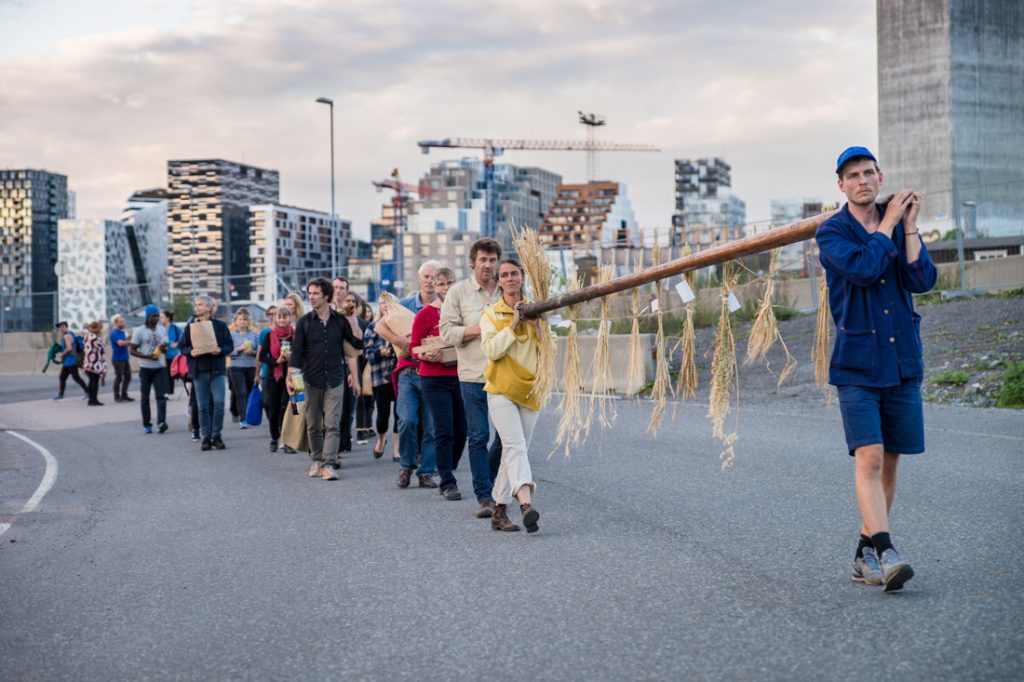
Seed Procession from Seed Journey by Futurefarmers, retracing the journey of ancient seeds from Oslo to Istanbul. Photo by Monika Lovdahi
Broken Nature: Design Takes on Human Survival, the XXII International Exhibition of La Triennale di Milano, opened on 1 March and runs till 1 September. It’s a confrontational show to say the least, particularly in a week when we collectively celebrate the new and shiny. But Broken Nature is not only about designed objects; it studies the state of the threads that connect humans to their economic, social, cultural and political environments, and to those of other species (animals, plants, microbes – as well as species as yet unknown), at all scales and in all systems.
She continues, “It facilitates a perception of long time, beyond the lifespan of a few generations; and it offers visitors a clear idea of practical steps that can be taken toward a restorative attitude.”
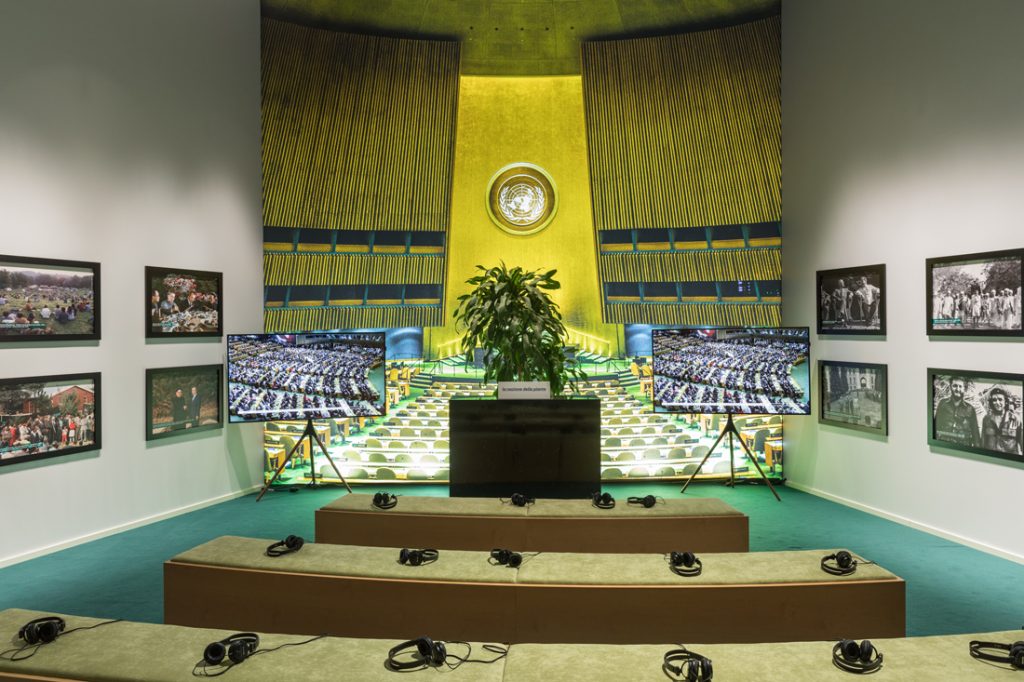
Nation of Plants. Image copyright La Triennale di Milano, photo by Gianluca Di Ioia
A number of exhibition components make up the show: a thematic exhibition (containing four works specially commissioned from international designers, as well as around 100 projects from the last three decades that exemplify restorative design, architecture and art from all over the world); the contributions of 21 international participants who were invited through official government channels; an installation called The Great Animal Orchestra, created by Bernie Krause and United Visual Artists on the initiative of the Fondation Cartier pour l’art contemporain; and a special exhibition entitled The Nation of Plants, curated by Stefano Mancuso (one of the world’s leading experts in plant neurobiology).
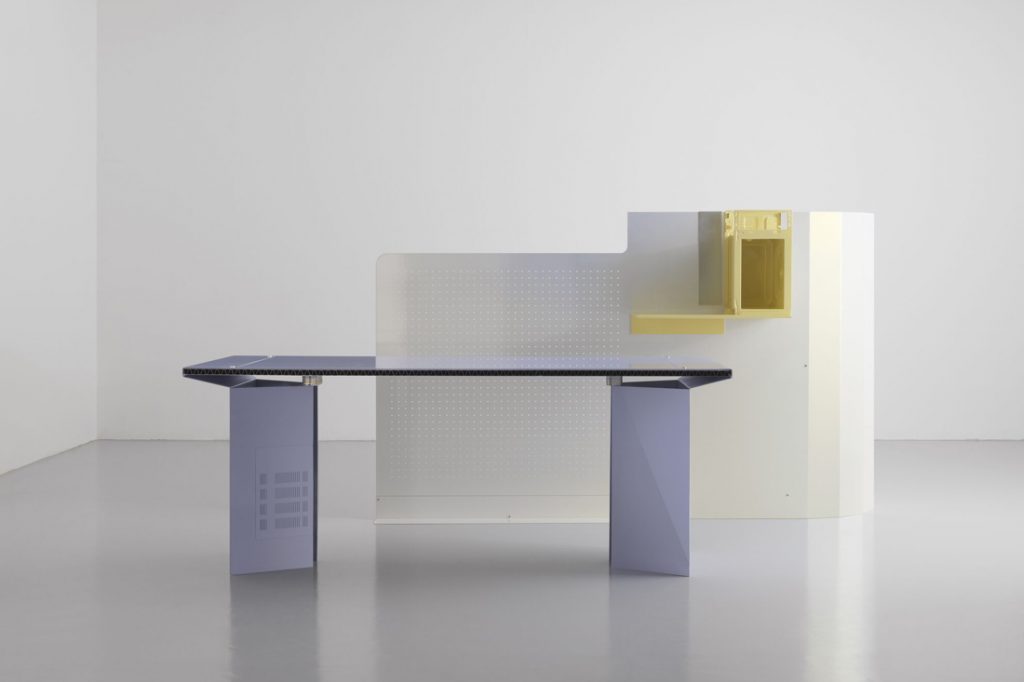
Cubicle 1 from Ore Streams by Formafantasma (2017). Photo by IKON
The thematic exhibition’s four specially commissioned works include Formafantasma’s Ore Streams – a series of furniture produced with electronic waste that responds to the expectation that by 2080 the biggest metal reserves will not be underground but above the surface, as ingots stored in private buildings or otherwise circulated within products such as building materials, appliances, furniture, and consumer electronics.
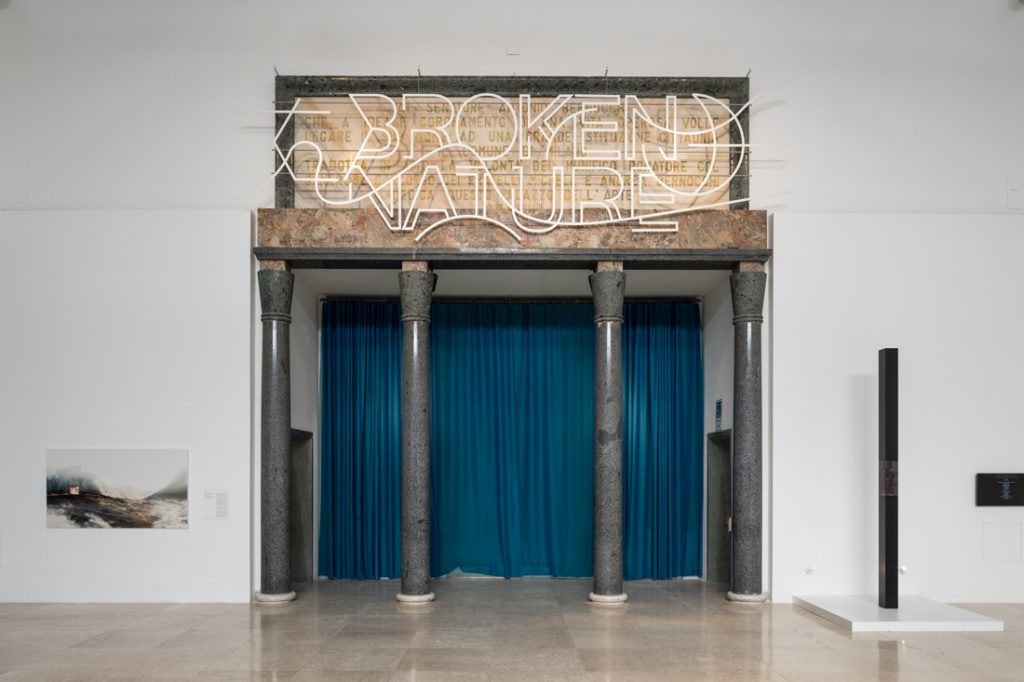
Totems by Neri Oxman and the Mediated Matter Group at Massachusetts Institute of Technology (2019). Image copyright La Triennale di Milano, photo by Gianluca Di Ioia
Ore Streams is presented alongside Totems by Neri Oxman and the Mediated Matter Group at MIT (which studies the vital biological role of melanin as well as its societally harmful associations, and looks at the design potential of its chemical synthesis); Birdsong by Sigil (which contemplates encounters and entanglements between humans and birds, and the associated place-related tension, via the design of an agricultural monument – a scarecrow – in Syria); and The Room of Change by Acurat (a hand-crafted data-tapestry illustrating how multiple aspects of our environment have changed in the past centuries, are still changing, and will likely continue changing).
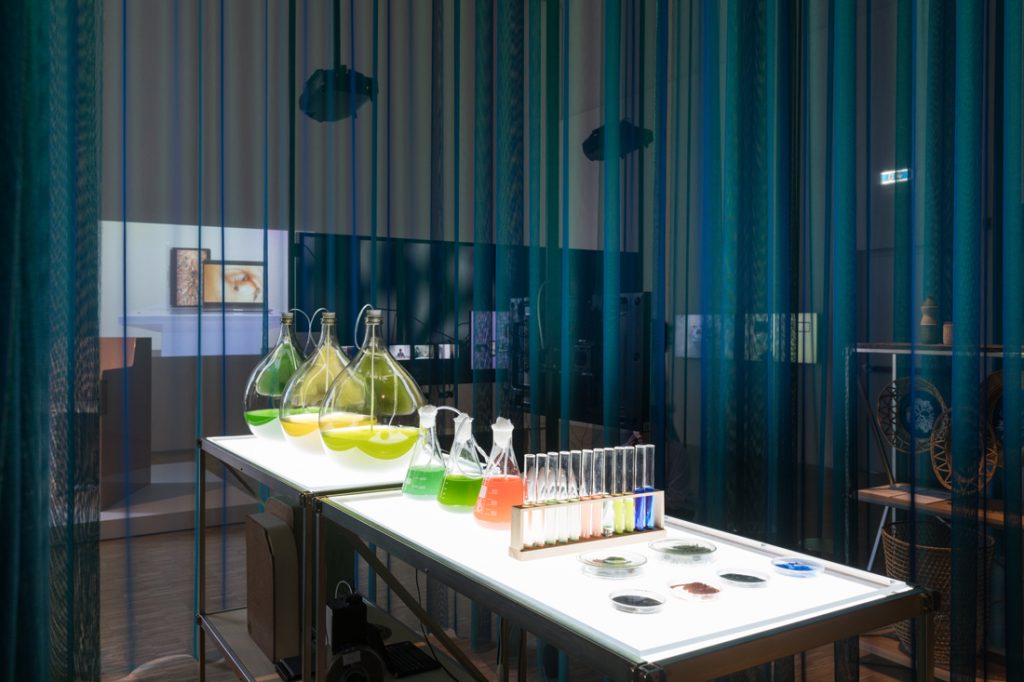
Installation view. Image copyright La Triennale di Milano, photo by Gianluca Di Ioia
The 21 international participants include four from our region: Australia, China, Myanmar and Sri Lanka. Australia brings fantasy head-to-head with the hard facts of climate change in the Theatre of the Alienated Land by Amaia Sanchez-Velasco (in collaboration with academics and students from the Schools of Design, Architecture and Life Sciences at the University of Technology Sydney, with reference to the critical body of work of Grandeza Studio and Miguel Rodriguez-Casellas).
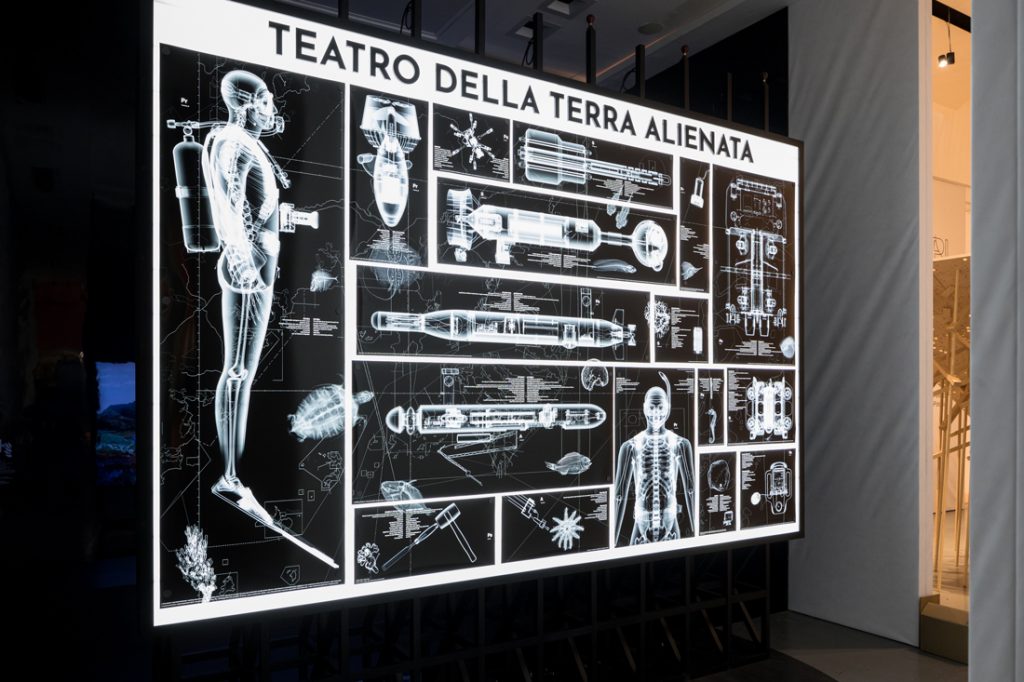
Australia’s installation. Image copyright La Triennale di Milano, photo by Gianluca Di Ioia
China’s installation, titled Environmental Consciousness in Design, surveys its topic through three lenses: family (including how the Chinese family is changing), community (urban-rural community building) and nature (with a case study of Chongming Eco Island in Shanghai). The installation was curated by Lou Yongqi (Tongji University, College of Design and Innovation), Zhao Yang (Shanghai University, Shanghai Academy of Fine Arts) and Zhou Yanyang (Tsinghua University).
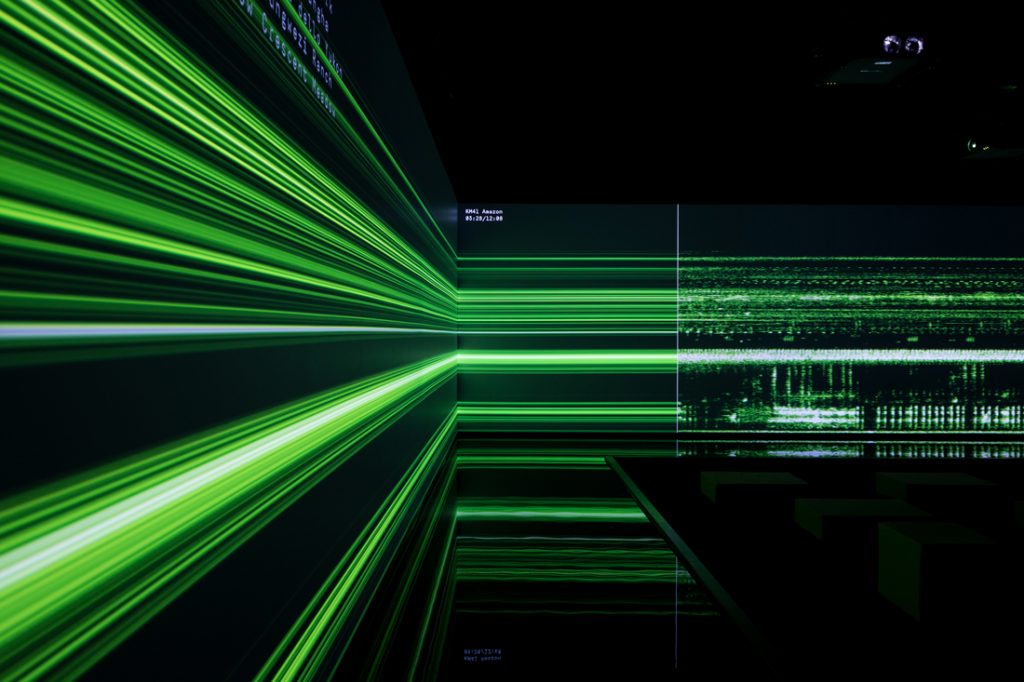
The Great Animal Orchestra. Image copyright La Triennale di Milano, photo by Gianluca Di Ioia
The Great Animal Orchestra is a video and sound installation providing an immersive journey through seven territories chosen for their ecological diversity and the richness of their biophony (the sound of animals). The Nation of Plants is based on the idea that one of the ways to avoid a catastrophic future for humanity is to take a radically new approach to plants, using them not just for what they have to offer us, but also for what they can teach us. It suggests we could better assimilate with plants by imagining them in our terms – through a mental category that is familiar to us: the ‘nation’.
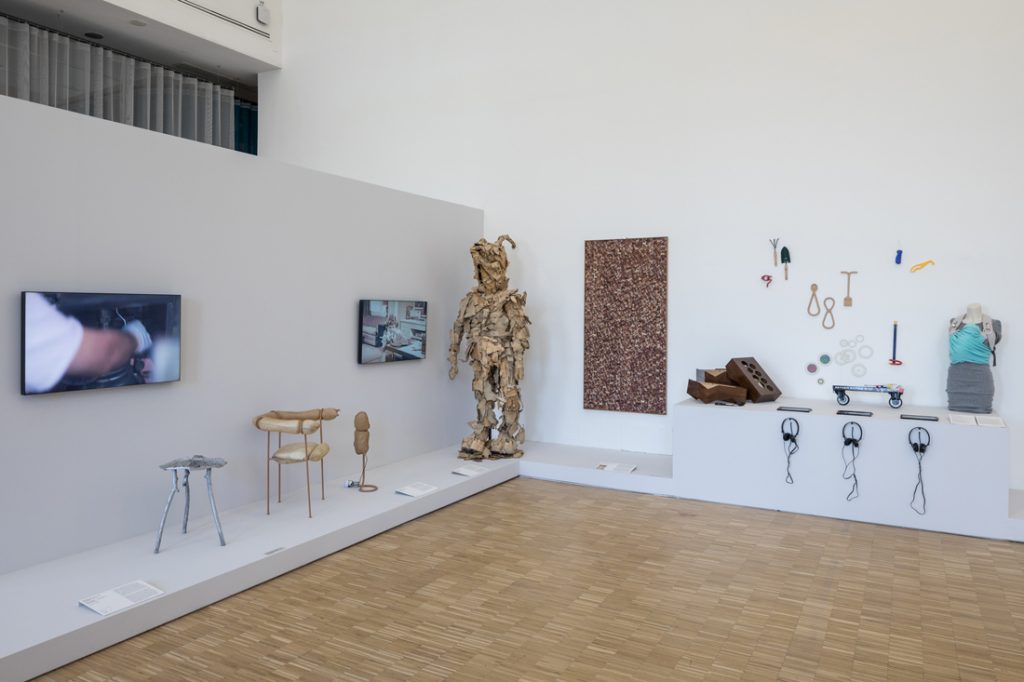
Installation view. Image copyright La Triennale di Milano, photo by Gianluca Di Ioia
While you’re roaming the halls, look out for the products of some familiar brands from the design industry, who are serving as exhibition sponsors. Artemide’s Gople lamp (designed by BIG) appears in several installations; its RWB technology provides the appropriate light at the different stages of plant growth. Emeco contributes its 1 Inch Reclaimed chair (designed by Jasper Morrison), which is made from 90 per cent reclaimed waste. Kvadrat has provided 500 meters of Zulu fabric and 70 meters of Dawn fabric for the exhibition installation. Molteni&C has provided seating for the Triennale cafeteria: the Norma chair (designed by Giulio Iacchetti) and the D.270.2 rattan armchair (designed by Gio Ponti).
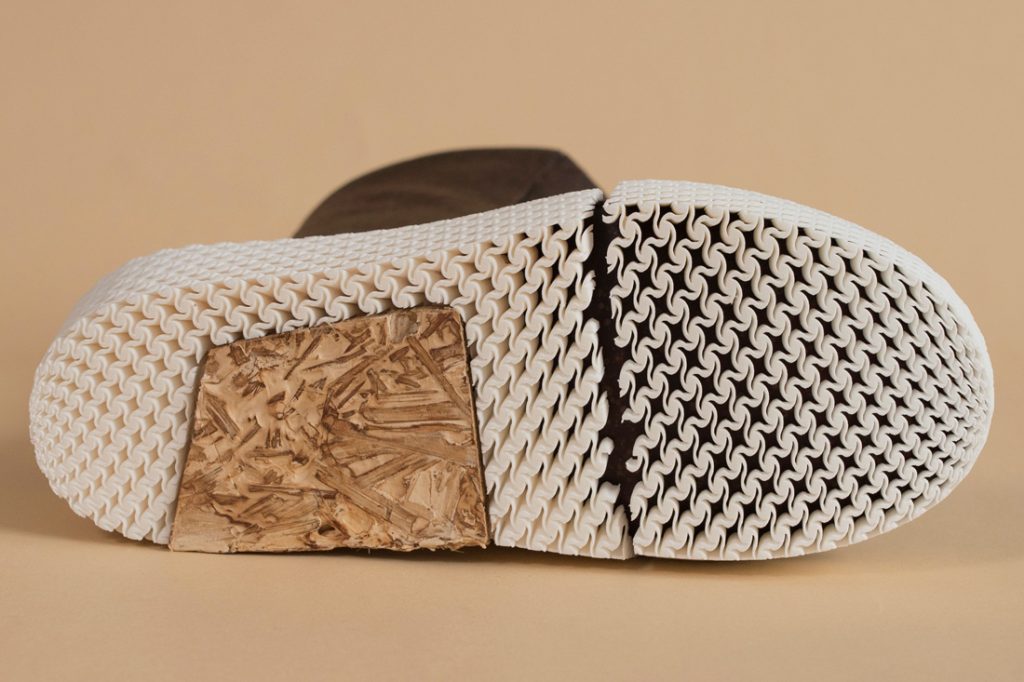
Caskia / Growing a MarsBoot (2017) by Liz Ciokajlo, OurOwnsKIN and Maurizio Montalti, with Officina Corpuscoli. The project explores our current material culture and how it could impact our future living on Mars. Photo by George Ellsworth, courtesy the designers
Writes Antonelli in the exhibition catalogue, “Design should be centred not only on humans, but on the future of the whole biosphere as well. Its approaches should aim not only to correct humanity’s self-destructive course, but also to replenish our relationship with all environments and all species – including other human beings.”
A concerted effort is required at all levels – grassroots, government, organisations and industries. “In every realm, design should be a fundamental participant,” she says, suggesting that designers can be the ones to help lead change.
A searchable and comprehensive guide for specifying leading products and their suppliers
Keep up to date with the latest and greatest from our industry BFF's!

The Sub-Zero Wolf showrooms in Sydney and Melbourne provide a creative experience unlike any other. Now showcasing all-new product ranges, the showrooms present a unique perspective on the future of kitchens, homes and lifestyles.

In the pursuit of an uplifting synergy between the inner world and the surrounding environment, internationally acclaimed Interior Architect and Designer Lorena Gaxiola transform the vibration of the auspicious number ‘8’ into mesmerising artistry alongside the Feltex design team, brought to you by GH Commercial.

Savage Design’s approach to understanding the relationship between design concepts and user experience, particularly with metalwork, transcends traditional boundaries, blending timeless craftsmanship with digital innovation to create enduring elegance in objects, furnishings, and door furniture.

Marylou Cafaro’s first trendjournal sparked a powerful, decades-long movement in joinery designs and finishes which eventually saw Australian design develop its independence and characteristic style. Now, polytec offers all-new insights into the future of Australian design.

With Milan 2024 only a few weeks away, we sneak a view of some of the most exciting pieces set to go on show – from lighting design to furniture, here are nine preview products.

An outstanding line-up of participants will contribute to a beautifully curated exhibition in Thailand that delves deep into the collective thinking of architecture in our region and helps set a progressive agenda for the future of design.
The internet never sleeps! Here's the stuff you might have missed

Beau Fulwood and Alison Peach on returning to a low-tech, first-principles concept of design as a strategy to combat climate change.

Esoteriko has embodied a new lease on beauty within Double Bay’s latest cosmetic clinic, overlayed with modern eclecticism.